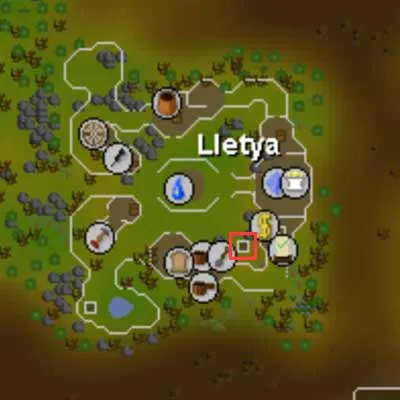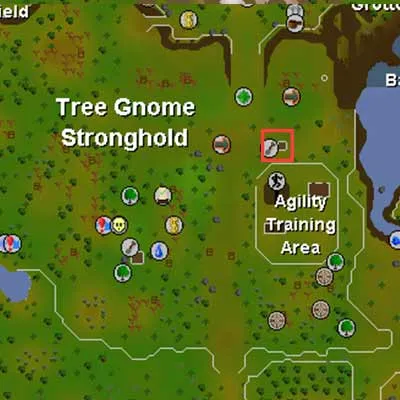Your cart is empty
Fruit Tree Farming OSRS Guide for Efficient XP and Profit

Fruit tree farming in Old School RuneScape (OSRS) is a cornerstone of the Farming skill, offering players a low-effort way to gain experience while exploring Gielinor’s iconic locations. Whether you’re aiming for level 99 Farming or looking to make some profit, this guide covers everything you need to know about growing fruit trees, from sapling preparation to optimizing your runs. With the right strategy, fruit tree farming can be both rewarding and relaxing, fitting seamlessly into your daily routine.
Fruit tree farming stands out due to its passive nature. Unlike active skills like Mining or Woodcutting, Farming lets you plant, walk away, and return hours later for big XP drops. Fruit trees, in particular, are great because they balance cost, XP, and potential profit. They’re also essential for quests like Monkey Madness II and for crafting items like gnome cocktails. Plus, who doesn’t love teleporting around to places like Catherby or Brimhaven while leveling up?
Benefits of Fruit Tree Farming
Here’s why you should prioritize fruit trees:
- High XP per run: Checking a tree’s health grants massive experience, especially at higher levels.
- Low time commitment: A full run takes about 5-10 minutes once a day.
- Profit potential: Fruits like papayas and coconuts can be sold or used in Herblore.
- Skill synergy: Fruits are ingredients in Cooking and Herblore, boosting other skills.
Who Should Focus on Fruit Trees?
Fruit tree farming is ideal for players with at least level 27 Farming, though higher levels unlock better trees. It’s perfect for those who prefer AFK training methods or have limited playtime. Ironmen also benefit, as fruits are key for self-sustaining accounts. If you’re chasing 99 Farming on a budget, fruit trees are cheaper than regular trees like magic or yew.
Getting Started with Fruit Tree Farming

Before you plant your first sapling, you need to understand the process and gather the right tools. Fruit trees require a bit of setup, but once you’re rolling, it’s smooth sailing.
Tools and Requirements
To farm fruit trees, you’ll need:
- Gardening trowel: For planting seeds in pots.
- Watering can: To water seedlings (refillable at any water source).
- Spade: For planting saplings and clearing patches.
- Plant pots: One per seed (buy from Farming shops).
- Fruit tree seeds: Obtained from bird nests, monster drops, or the Grand Exchange.
- Teleport methods: Runes, amulets, or tablets for quick travel.
Tip: Magic secateurs (from Fairytale I – Growing Pains) boost yield when harvesting, and the Farming cape gives a 5% chance to avoid using payment items.
Fruit Tree Growth Mechanics
Fruit trees grow differently from other crops. Here’s the step-by-step:
- Create a sapling: Fill a plant pot with soil, plant a seed, water it, and wait 5-10 minutes for it to become a sapling.
- Plant the sapling: Clear a fruit tree patch, plant the sapling, and optionally add compost or pay a farmer to protect it.
- Wait for growth: Fruit trees take 16 hours to fully grow, with growth stages every 160 minutes.
- Check health: Once grown, check the tree’s health for the bulk of your XP.
- Harvest: Pick up to six fruits, which regrow every 40 minutes unless you chop the tree down.
Note: Saplings don’t need watering after planting, and paying farmers eliminates disease risk, making runs stress-free.
Fruit Tree Types and Requirements
OSRS offers several fruit trees, each with unique level requirements, XP rewards, and uses. Choosing the right tree depends on your Farming level, budget, and goals.
Overview of Fruit Trees
Here’s a breakdown of all fruit trees available:
| Tree | Farming Level | Seed Cost (GP) | Protection Payment | Check Health XP | Fruit Uses |
|---|---|---|---|---|---|
| Apple | 27 | ~30 | 9 Sweetcorn | 1,199.5 | Gnome Cooking |
| Banana | 33 | ~50 | 4 Baskets of Apples | 1,750.5 | Gnome Cooking |
| Orange | 39 | ~100 | 3 Baskets of Strawberries | 2,470.2 | Gnome Cooking |
| Curry | 42 | ~200 | 5 Baskets of Bananas | 2,906.9 | Spicy Stews |
| Pineapple | 51 | ~500 | 10 Watermelons | 4,605.7 | Supercompost, Drinks |
| Papaya | 57 | ~2,000 | 10 Pineapples | 6,146.4 | Herblore, Pawyas |
| Palm | 68 | ~40,000 | 15 Papayas | 10,150.1 | Herblore, Cooking |
Budget Tip: Stick to pineapple or papaya trees for cost-effective XP. Palm trees are pricey but offer the best XP at high levels.
Which Tree Should You Plant?
At lower levels (27-50), plant apple or banana trees to save money. From level 51, pineapples are a sweet spot for XP and affordability. At 57+, papaya trees are great for profit if you sell the fruit or use them for Herblore. Palm trees are only worth it if you’re rushing 99 and have millions to spare.
Optimizing Your Fruit Tree Run
A fruit tree run involves visiting all six patches (seven with high-level unlocks) to plant, check, or harvest. Efficiency is key to maximizing XP and minimizing time spent.
Fruit Tree Patch Locations
Here are the six main fruit tree patches and how to reach them:
- Gnome Stronghold: Spirit tree or Gnome Glider. Near the Grand Tree.
- Tree Gnome Village: Spirit tree or Elkoy’s shortcut (after quest).
- Catherby: Camelot Teleport, then run east along the beach.
- Brimhaven: Amulet of Glory to Karamja, then run west.
- Lletya: Teleport crystal (after Mourning’s End Part I).
- Farming Guild: Skills necklace (level 85 Farming required).
Pro Tip: Unlock spirit trees by planting one at level 83 Farming for fast travel to Gnome patches.
Efficient Run Order
For a quick run, follow this order:
- Farming Guild: Start here if you have access (Skills necklace).
- Gnome Stronghold: Spirit tree from guild.
- Tree Gnome Village: Spirit tree or glider.
- Catherby: Camelot Teleport.
- Brimhaven: Glory teleport or house tab (if POH in Brimhaven).
- Lletya: Teleport crystal.
This order minimizes teleports and run distance. A full run takes about 5 minutes with good teleports.
Inventory Setup
Your inventory should include:
- Saplings: One per patch (pre-make them).
- Payments: Noted items like pineapples or papayas for farmers.
- Teleports: Runes, amulets, or tablets.
- Tools: Spade, magic secateurs (if harvesting).
- Coins: 200 per patch to remove trees (optional).
Time-Saver: Store tools with a Tool Leprechaun at any patch to free up space.
Tips for Maximizing XP and Profit
Fruit tree farming can be tailored for speed, savings, or profit. Here are strategies to get the most out of your runs.
Boosting XP Efficiency
- Pay for protection: Spend GP to avoid disease and save time curing trees.
- Use ultracompost: If not paying farmers, ultracompost cuts disease risk to 10%.
- Combine with other runs: Do herb or regular tree runs alongside fruit trees for more XP per session.
- Farming Guild contracts: At level 45+, complete contracts for bonus XP and seeds.
Making Profit
Fruit trees can turn a profit if you play smart:
- Sell high-value fruits: Papayas (~500 GP each) and coconuts (~1,000 GP) add up.
- Grow pineapples: Cheap to plant, and fruits make supercompost for herb runs.
- Avoid palm trees: High seed costs often outweigh fruit profits unless prices spike.
Ironman Strategies
For Ironmen, fruit trees are a lifeline:
- Farm bird nests: Woodcutting or Mole kills for seed supply.
- Use fruits wisely: Papayas for Herblore (antidotes) or pawya hunting.
- Prioritize quests: Unlock Lletya and Farming Guild early for more patches.
With these tips, you can hit 99 Farming in as little as 70 days (with palm trees) or stretch it out affordably with pineapples. Fruit tree runs are a chill way to level up while enjoying OSRS’s world. Grab your saplings, teleport to the Gnome Stronghold, and start planting today!
